Halo 4 - 21 must-know facts about the Halo universe
Get caught up before jumping into Halo 4
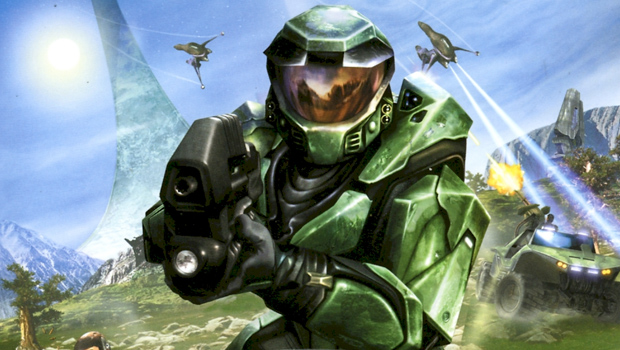
Get caught up before starting the fight
Next week, Halo 4 starts the fight anew, bringing Master Chief back in a remarkably big way. But before you delve into a new universe, you should get caught up on the one already established in the past Halo games, novels, web series, and more. Your time is valuable, though, so we assembled everything you need to know in one place.
Want to find out about Master Chiefs past? The history of the Spartan program? Find out why the Covenant are so grumpy? Answers await. Spoilers for past Halo games are included, but none for Halo 4...
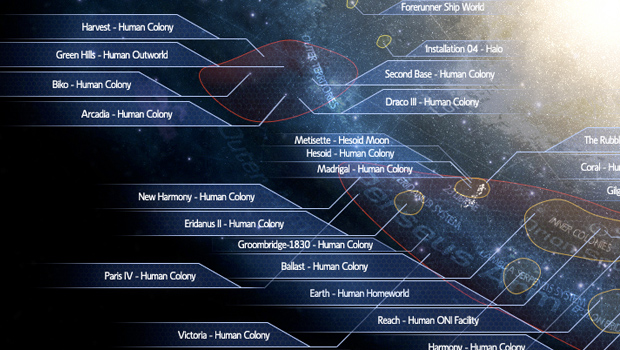
In the future, humanity spread out and colonized the galaxy
Humanitys reliance on Earth ends by 2080 in the Halo universe, as the planets inhabitants begin to spread around the Sol system. But this move isnt a painless one, and different political groups rise up to make life difficult for the humans, who are new to this whole flying around space and making colonies thing.
In order to battle these foes from within, the worlds governments were forced to beef up their military and wage war on their own people. This, obviously, didnt go all that well, and though it technically quashed these rebellions, the cost was tremendous. Now, low on food and high on a massive, useless military, humanity was looking for better solutions.
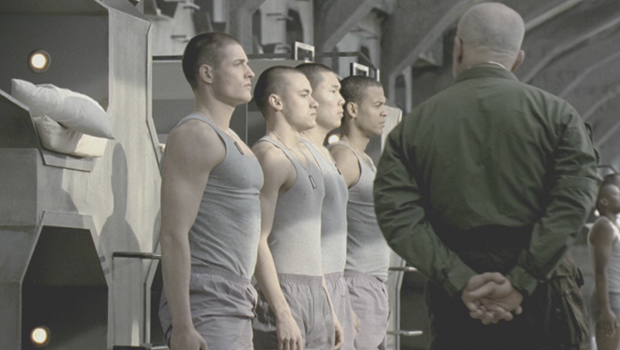
In order to police its many colonies, the Spartan program was founded...
In 2321, the first Spartan program was founded, attempting to turn regular soldiers into super soldiers. Pulling from volunteers from the armed forces, the first wave of Spartans were regular soldiers, experimented on and enhanced. But while there was some improvement, it wasnt really all that impressive.
Eventually, the Spartan program was scrapped, and the members were returned to their regular duty. So much for super soldiers, right? The Orion Project was shelved for a few hundred years after the Spartan programs failures, even though resistance throughout the galaxy still needed quelling.
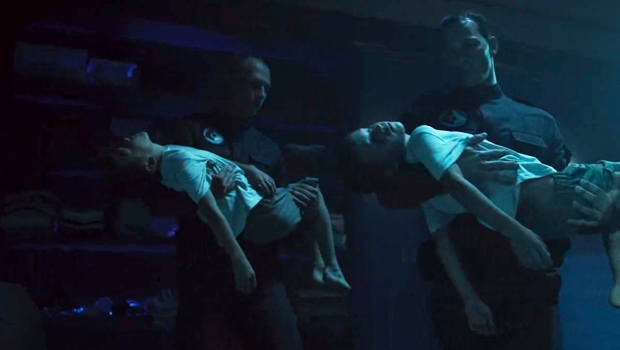
but it didnt work until it was filled with kidnapped children
The failure of the original Spartan program didnt derail efforts to create super soldiers for too long. Insurrection was still commonplace, and it was expensive to continually send in new soldiers to kill angry civilians. Something needed to happen--and in 2525, it did.
The project was resuscitated with new, controversial ideas. Namely, it involved kidnapping children. Dr. Catherine Halsey, the new leader of the program, identified key genetic traits that would lead to the best Spartans, and decided that theyd need to be trained from an extremely young age to reach the results they wanted. Instead of dealing with the politics of kicking down doors and demanding children, they moved forward with just kidnapping six year olds and replacing them with flash clones (that would die soon after due to random medical disorders). Nice.
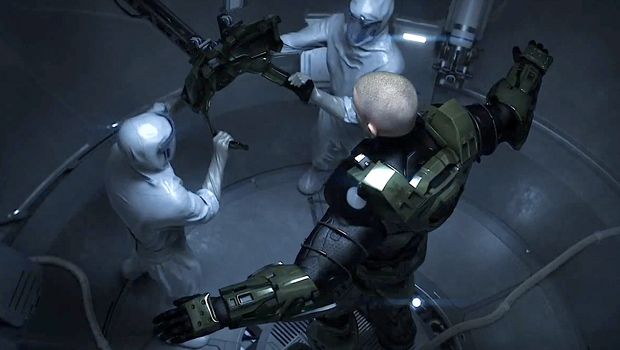
Humans were turned into super soldiers and given awesome armor
But hey! You cant argue the results, right? The Spartan-II program was a rousing success, both thanks to the aforementioned kidnapping of children and the newly added element of suiting them up in awesome outfits. The Spartans were the best soldiers humanity had ever seen, even if the costs were extremely high.
In the years following the programs success, it saw several upgrades. The largest, however, was in the addition of MJOLNIR armor. This powerful exoskeleton took full advantage of the powerful physiques of the humans wearing them to advance the already powerful soldiers to a hilariously ridiculous point.
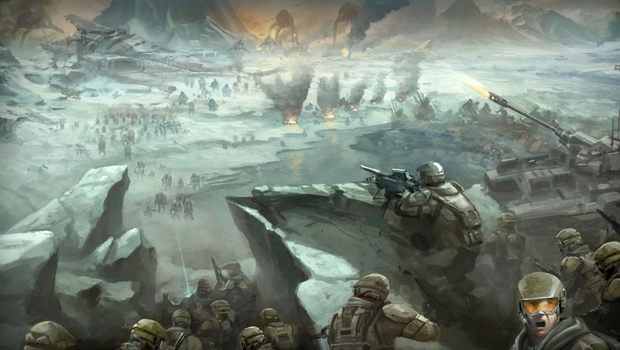
But the Spartans were forced to defend humanity when the Covenant attacked
This armor wasnt just randomly thrown to them, though. Just like most technological advances, MJOLNIR armor was developed for war, and created in the face of a new threat: the Covenant. For the first time in its history, the ever-expanding human race had rubbed up against an aggressive alien race.
Though they werent built to battle aliens or deal with their unorthodox weapons and tactics, the Spartans were invaluable in the war, proving to be so devastating that the Covenant eventually referred to anything in MJOLNIR armor as a demon. Talk about intimidation.
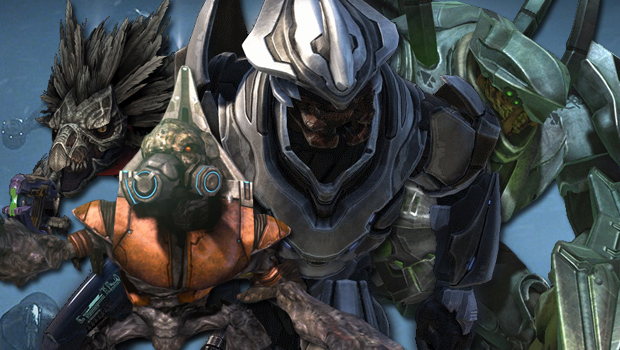
The Covenant are a conglomeration of stupid, religious aliens
The Covenant Empire isnt actually just one alien race. Its an empire, or a... covenant, if you will, of races. There are small Unggoy (Grunts), who appear to have the IQ of children; Hunters, who are as powerful as they are ugly; Sangheili (Elites), who seem way too smart to hang out with all of the other races in the Covenant; and a bunch of others that fill different roles in the theocratic hegemony (you really dont need to actually know what that means) that is the Covenant Empire.
Oh, and theyre religious. Like, super religious. Led by the San 'Shyuum, also called the Prophets, the races that make up the Covenant believe that theyre following the orders of a god. Apparently, that god is kind of a dick.
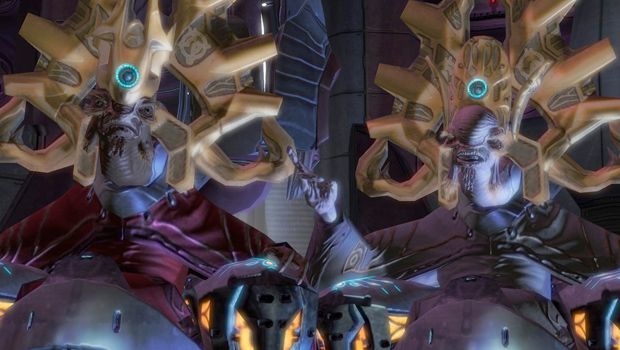
They worshiped Forerunners as gods because they're crazy zealots
Though they follow the San 'Shyuums words, they dont actually worship them--instead, the Prophets are just that: prophets. The San 'Shyuum found ancient relics thousands of years ago and (poorly) translated them, reciting the words to their people. Sound familiar?
These relics belonged to an alien race called the Forerunners, who existed long before humanity (or even the Covenant races) had crawled from the primordial muck. The Prophets ruled over the other races by sending them on errands in order to abide by the Forerunners will, even if they didnt really understand what they were reading all that well. That will, for the record, involved activating the Halo rings that the series gets its name from.
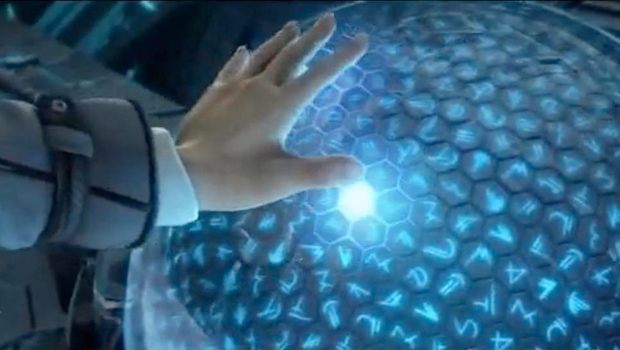
Forerunners are an ancient race that battled the Flood
Tall, thin, eerily humanoid, and totally extinct, the Forerunners ran the galaxy a long, long time ago. After taking down the Precursors, the race that created them, the Forerunners enjoyed a long run of being the coolest aliens in the room. That ended when they ran into the Flood, who contested their status by attempting to eat all organic life.
What? Zombies? No! The Flood are... yeah, theyre essentially zombies controlled by a hivemind. The Forerunners valiantly battled them--but slowly came to realize that, as the Flood was more of a disease than a race, theyd have a hard time killing them with any traditional means.
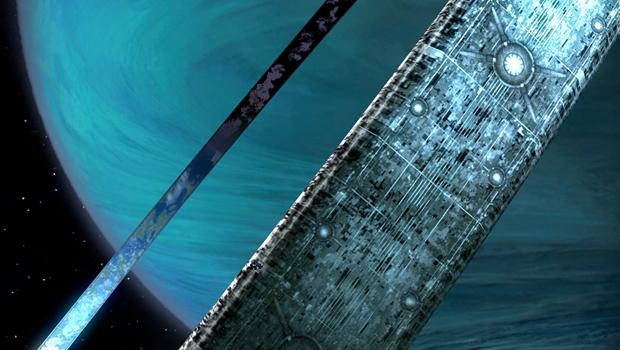
And by "battled," we mean "tried to kill by blowing up the entire galaxy"
Backed into a corner with the Flood nipping at their heels, the Forerunners decided to try something crazy. The Flood would die if they couldnt eat, and since they ate biological matter, all the Forerunners needed to do was to get rid of all of that. Simple enough, right? First, a Forerunner known as The Librarian went throughout the galaxy collecting samples of all life, indexing it into The Ark. Then, the Forerunners killed everything.
In order to starve the Flood, the Forerunners built the Halo Rings. When they were activated, all life was wiped out, and then slowly replenished thanks to the Ark. Thats why there are still humans and other aliens. The only Flood that survived were test subjects, locked away so they would never escape. They, of course, did.
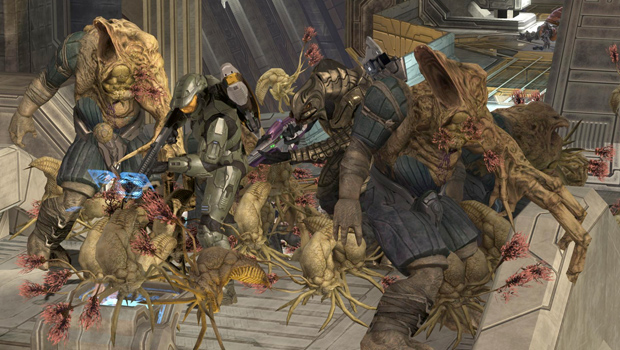
While humans and Covenant fought, the Flood tried to take over
Fast-forward a few hundred thousand years, and were back with (games) present. The Flood are released, and start up their spread all over again, jumping into the middle of the Human-Covenant war while the two sides were duking it out. This, obviously, was a problem, and made the already deadly war that much more devastating.
Led by the Gravemind (like the Hivemind, only spookier), the Flood continued their attempts at eating everything in the galaxy. Humanity attempted to battle it how it normally battles stuff (by blowing it up), and the Covenant scrambled to try to use the Halo rings again, because the Prophets told them to.
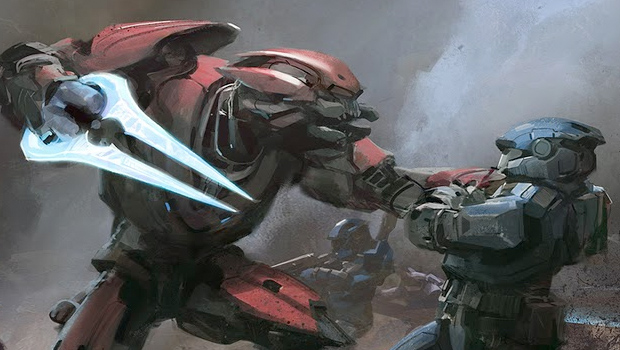
The war between humanity and the Covenant lasted for over 25 years
On the surface of random colonies, in giant naval battles, and across epic sieges, the war raged on. More than two dozen years passed from the beginning to the end of the Human-Covenant war, with each side slowly whittling down the others morale.
The Covenant seemed to be gaining ground near the end, eventually invading Earth. It appeared as though their technology and numbers would win the war.
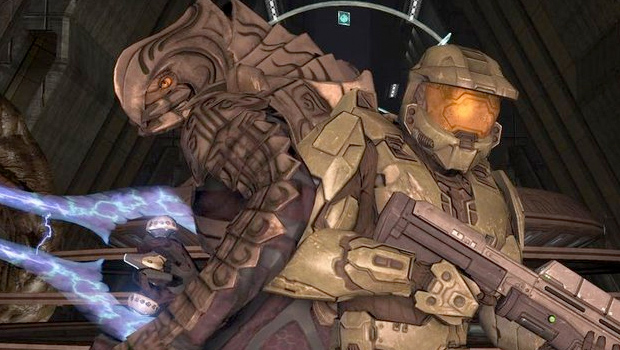
The Covenant eventually split apart, before finally making peace with humanity
But all wasnt well in the house of Covenant. Near the end of the war, when victory seemed all but inevitable, an event that would eventually be known as "The Great Schism" occurred. The Prophet of Truth moved that the Jiralhanae (Brutes)--who were seen as dim-witted warriors--be promoted within the ranks above the Elites. This came after the Elites failed to protect one of the Prophets from a Spartan, who marched right up and killed him in the face.
At the same time, an Elite by the name of Arbiter Thel 'Vadam discovered what the Halo rings really did, and reported back on the Prophets lies. The Elites didnt take kindly to either of these things, and seceded from the Covenant. Without their support, humanity eventually overtook the Covenant and won the war.

They also worked together to kill the Flood once and for all
Even with the Covenant defeated, the Flood were still a problem. Theyd wiped out races before, including ones much more technologically advanced than humans, and without activating the Halo rings (which so wasnt an option), it looked like theyd eventually take over humanity, too.
But with the help of some of the Elites, humanity eventually found a permanent solution. Funny thing about hiveminds: If you kill the leader, everything else gets stupid. With that in mind, the same Spartan that killed the leaders of the Covenant found his way to the Gravemind and killed it, too, leaving the Flood as an annoying, but more manageable problem--and without killing the entire galaxy in the process!
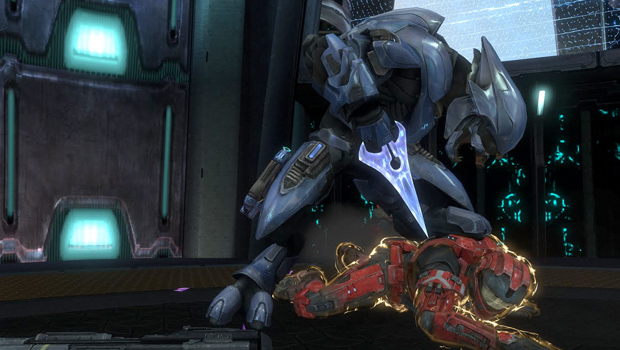
Almost all of the Spartans were killed during the war
It wasnt without its cost, though. The war lasted for a loooong time, and the Spartans that kept humanity afloat were slowly picked off, one by one. Since the Spartan-II program didnt continue during the war, it meant there werent new Spartans to replace the old ones, making them a non-renewable resource.
Some died during skirmishes around the galaxy, while a large chunk perished during the Battle of Reach. There were only a few dozen to begin with, but it was still a huge blow to humanitys armed forces. One, however, survived it all.
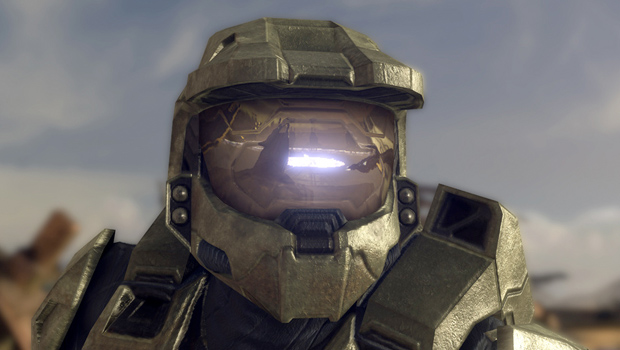
The only reason humanity won is because of Master Chief Petty Officer John-117
Hes been given many names throughout the Halo series, including (but not limited to): John-117, Sierra-117, Chief, Reclaimer, and Demon. Most, though, refer to him as Master Chief, and he is easily the most important soldier in humanitys history.
The Spartan that killed the Flood? Master Chief. The Spartan that killed all the Prophets? Master Chief. The Spartan that, at one point, literally fell from orbit without so much as a scratch? Master. Freaking. Chief. Master Chief Petty Officer John-117 is the last (known) Spartan alive, and he is essentially responsible for every major victory humanity saw.
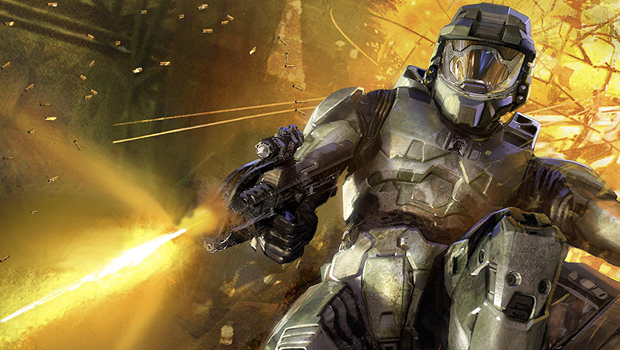
Master Chief is the most badass human alive
Yeah, thats right, he fell from orbit and smashed into the ground. Why didnt he turn into dust? Why wasnt he dead upon impact? Sheer badassery. Everything Master Chief does is awesome, and he pulls it off with such ridiculous swagger that its mindblowing.
The series does, actually, give a small explanation as to why he seems so lucky: Its because hes lucky. Seriously. Something about the Chief makes him abnormally fortunate, and its the reason he can jump out of a spaceship and land on another, where most people would just drift off into space.
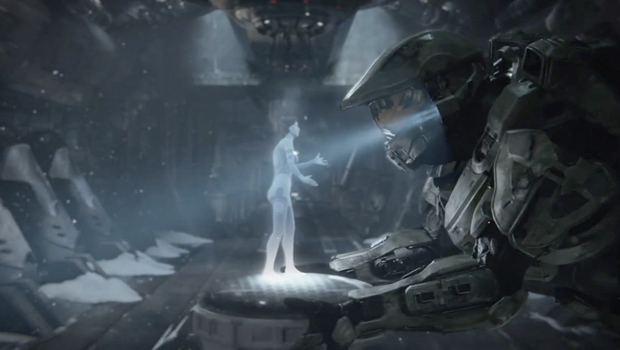
Chief's AI, Cortana, is pretty awesome too
John-117s luck is first noticed by his AI companion, Cortana. Every Spartan that survived Spartan school was given super-smart AI to work with, and Chief's is the lovely, funny, wonderful Cortana. Besides talking to him--which is important, because hes sort of antisocial--she also acts as his mentor and moral compass.
She hacks computers for him, helps him make choices, and keeps him on the right track. In essence, she is the deus ex machina of the series, allowing for plenty of video game stuff to fit without overly long exposition.
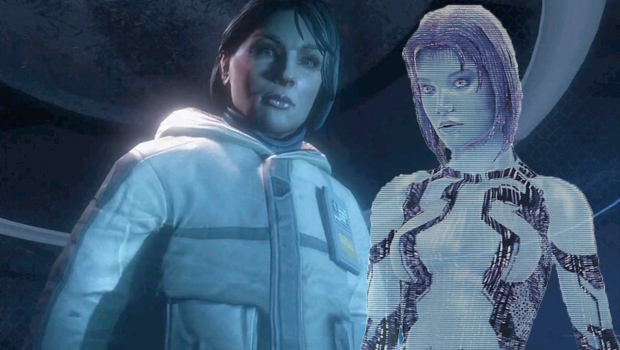
Cortana is a digital clone of the Spartan-II Project creator, Catherine Halsey
Halo's "smart AI" are all created by cloning human minds, but Cortana is special. While others are copies of the brains of corpses, Cortana shares a mind with Dr. Catherine Halsey, the creator of the Spartan-II program, and one of the smartest humans in the universe. Halsey made some flash clones of her living mind and attempted to turn them into AI, and Cortana is the only success story. This makes her more intelligent than the already intelligent AI in the Haloverse.
It also means she shares memories, views, and opinions with Halsey. Her form, too, is similar to the Spartan-creators. Well, her younger form--Cortanas translucent, blue body is a replica of a young, spry Dr. Halsey.
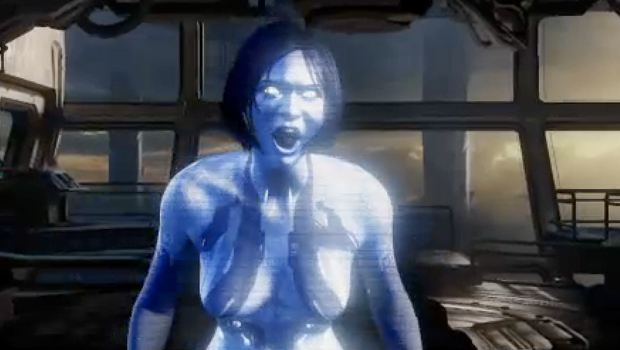
but she's over eight years old, which means she should be going crazy any day now
The smart AI in the Halo universe isnt perfect. Though it has a vast intellect that makes an actual human brain look meager in comparison, it comes with an expiration date. That date is seven years, and wouldnt you know it--Cortana recently celebrated her eighth birthday. Happy birthday, Cortana!
After seven years, things go downhill fast for AI. They start to corrupt, falling into a state called Rampancy, which is like a mix between dementia, multiple-personality disorder, and randomly developing delusions of godlike power and a contempt for the idiots that made you. Theres no cure, and the only solution is destroying the AI, which, were guessing, is something Chief isnt interested in.
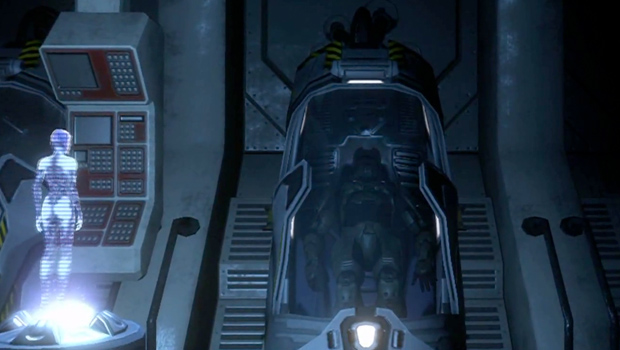
After killing the Flood and saving everyone, Chief locked himself in stasis
Remember when we said Master Chief saved everyone ever? Well, he did. In order to destroy the Gravemind, John needed to activate one of the Halo rings before it was completed, destroying the ring and the Flood with it. This didnt interest 343 Guilty Spark (the AI set to protect and control the Halo ring), who made life difficult for the Chief by murdering his friend (and former Spartan-I subject) Sergeant Johnson. Chief destroyed the pesky AI and activated the ring.
Cue the "driving across an exploding surface" mission! John (and Arbiter) made their way to the UNSC Forward Unto Dawn ship in order to escape. But when it jumped into Slipspace (Halos faster-than-light technology), the ship broke in half, with the Arbiters half jumping to Earth, and the Chiefs half floating in space indefinitely. Not wanting to, you know, die a slow death in space, Master Chief jumped into a stasis tube, giving Cortana one final order: Wake me when you need me.

where he is waiting when Halo 4 begins
Four years have passed since the Gravemind was destroyed. Humanity and the Covenant are still friendly (save for some fringe groups), and the Chief is still floating in space. On Earth, Arbiter arrived and delivered the news that Master Chief didnt make the jump to Slipspace. Because the UNSC has a rule that Spartans can never be pronounced dead (in order to keep up the mystique), he was declared missing-in-action--even though everyone just assumed that the Earths protector was dead.
But he wasnt, obviously. He was straight chillin' in stasis, enjoying his well-deserved rest. Its here that Halo 4 begins--with the Chief finally being needed, and, thus, awoken.
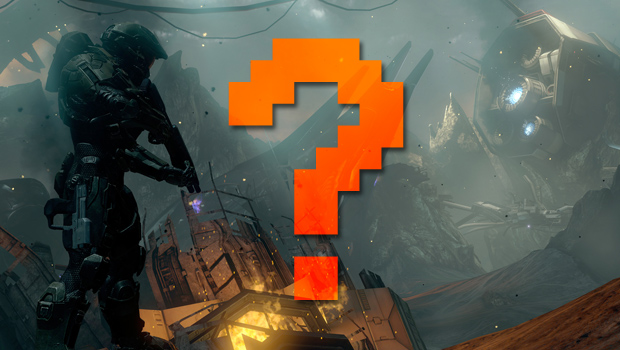
Begin the fight anew
Next week, 343 Industries Halo 4 will finally come out. Weve played it, and in our Halo 4 review, we said that its likely the best Halo yet--so you should really start getting excited for John-117s return. Anything we missed? Any random book passage that discredits something we wrote? Let us know!
And if you're looking for more articles getting you caught up on game universes (is it universi?), check out 21 must-know facts about the Assassins Creed universe and 21 facts about Resident Evils history.

Hollander Cooper was the Lead Features Editor of GamesRadar+ between 2011 and 2014. After that lengthy stint managing GR's editorial calendar he moved behind the curtain and into the video game industry itself, working as social media manager for EA and as a communications lead at Riot Games. Hollander is currently stationed at Apple as an organic social lead for the App Store and Apple Arcade.


